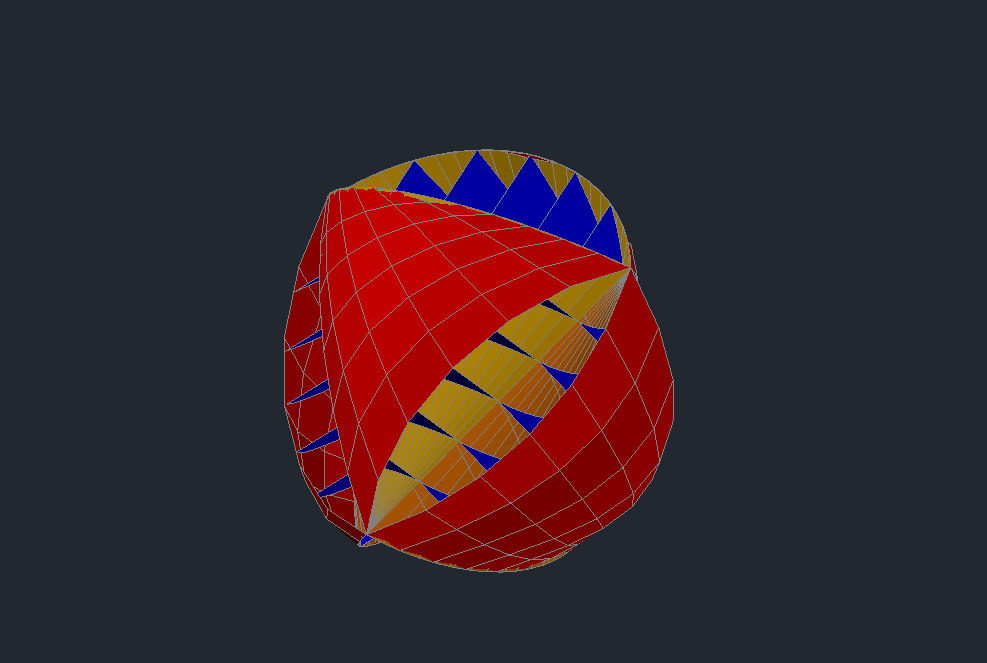Designed to capture the chaotic wind that blows through cities, O-Wind spins on a single axis but can harness gusts coming from any direction. The turbine makes use of Bernoulli’s principle for its mechanical motion, relying on differences in air pressure to generate momentum. The structure is lined with vents that have large entrances and smaller exits for air. In the presence of wind, the difference between the two terminals causes the turbine to move, with vents placed all across the sphere making it receptive to wind from any angle.
“O-Wind Turbine is a 25cm spherical device, which sits on a fixed axis and spins when wind hits it from any direction due to the geometric structure of its vents,” Orellana, 36, explained. “When wind energy turns the device, gears are triggered which kickstarts a generator. The generator converts the wind energy into electricity which we hope to then plug into the home or the grid. The prototype we have designed can be integrated into everyday urban life. It can be attached to a variety of structures, like the side of a building, a balcony, or a porch.”
While the turbine is less than a foot across, it was inspired by a much bigger device that operated under the same principle. Originally developed by NASA's Jet Propulsion Laboratory, the Mars Tumbleweed Rover was an inflatable ball with a six-foot diameter designed to track atmospheric conditions on the Red Planet. Testing in Greenland and Antarctica proved the multidirectional wind concept, but the rover had difficulty maintaining a course in tricky terrain. Nonetheless, the endeavour had an impact on Orellana, who took inspiration from the rover while designing O-Wind.

“Flaws in the Mars Tumbleweed Rover demonstrated the need for a multidirectional wind technology,” he said. “Compelled to solve problems that impact people's daily lives, I wanted to apply these lessons by tackling a global problem. Talking to professors and Yaseen, it was soon clear that the wind power market is dominated by unidirectional systems. That was my 'eureka' moment.”
O-Wind is still in the early stages of development and no details on its power output are currently available. For an individual device, it’s unlikely to be particularly impressive, but as the technology could be deployed from balconies on high-rise buildings around the world, the overall potential could be significant. According to the designers, the goal is to make the technology as widely available as possible.
“Using low-cost and sustainable materials like recycled plastic, we hope to produce O-Wind Turbine at a low cost, allowing it be sold at a price accessible to everyone,” said 24-year-old Yaseen Noorani. “What material we use will be a central focus in the next stages of our development.
“With the prize money, we plan to continue building prototypes to test how we can optimise the device using different sizes, materials and vents. From there we will begin to analyse energy output and research how this might feed into the grid, or provide energy directly to homes.”





Red Bull makes hydrogen fuel cell play with AVL
Surely EVs are the best solution for motor sports and for weight / performance dispense with the battery altogether by introducing paired conductors...